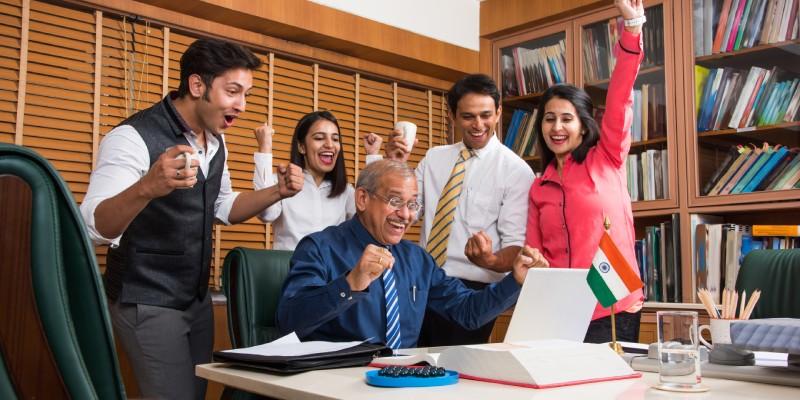In a country as diverse and populous as India, access to education has always been a challenge. To bridge this gap and promote education for all, the Indian government has introduced various free education schemes over the years. These initiatives aim to ensure that every child, regardless of their socio-economic background, has the opportunity to receive quality education.
In this article, we will delve into some of the most prominent free education schemes in India and their benefits.
What are Free Education Schemes in India?

Free Education Schemes in India are government initiatives aimed at providing free and accessible education to children, often focusing on marginalized groups, to ensure they receive quality education without financial burden.
Benefits of Free Education Schemes in India
India’s free education schemes offer a multitude of advantages, contributing to the nation’s educational and societal growth. Here are six key benefits:
- Inclusive Education: Free education schemes promote inclusivity by ensuring that children from all backgrounds have access to learning opportunities.
- Gender Equality: Schemes like Beti Bachao, Beti Padhao and NPEGEL empower girls, addressing gender disparities in education.
- Increased Enrollment: Initiatives like SSA and RTE Act significantly boost enrollment rates, bringing more children into the education system.
- Social Empowerment: The Midday Meal Scheme not only eliminates hunger but also creates employment opportunities for women, contributing to social empowerment.
- Quality Education: KGBV and other programs aim to improve the quality of education, ensuring that children receive a holistic learning experience.
- Rural Development: Free education schemes, such as NSIGSE, motivate rural girls to complete secondary education, contributing to the development of rural areas.
These schemes collectively work towards a more educated, inclusive, and empowered India, fostering a brighter future for the nation’s youth.
Top 11 Free Education Schemes in India

Let’s explore some of the top 11 free education schemes in India that have transformed the educational landscape and empowered countless children.
Sarva Shiksha Abhiyan (SSA)
Launched in 2001, Sarva Shiksha Abhiyan (SSA) is a beacon of hope for children aged 6 to 14. Covering the entire nation, SSA partners with local and state governments to provide Universal Elementary Education (UEE). Its mission is to universalize education, raise quality, and bridge social divides. SSA reaches children from all walks of life, making education a common thread.
National Program for Education of Girls at Elementary Education (NPEGEL)
Initiated in July 2003, the National Program for Education of Girls at Elementary Education (NPEGEL) is SSA’s vital ally. It specifically targets girls who remain outside the school gates. By fostering gender-sensitive learning, sensitizing teachers, and providing essentials, NPEGEL empowers girls to break stereotypes and embrace quality education.
Midday Meal Scheme
Born in 1995 as the National Programme of Nutritional Support to Primary Education, the Midday Meal Scheme fights classroom hunger. It not only fills bellies but also bridges social gaps, promotes attendance, and combats malnutrition. Women are empowered through job opportunities, while children grow emotionally and socially.
Right to Education (RTE) Act
Enacted in 2009, the Right to Education (RTE) Act is a game-changer. It makes education a fundamental right for all 6 to 14-year-olds and sets educational standards. No child pays fees for elementary education, and private schools reserve 25% of seats for economically weaker families.
Beti Bachao, Beti Padhao
Born in 2015, Beti Bachao, Beti Padhao stands tall against female foeticide and promotes girl education. It shatters gender stereotypes, ensures girl survival, and encourages girls to participate in educational endeavours, emphasizing that they are valuable assets.
Kasturba Gandhi Balika Vidyalaya
Launched in 2004, the Kasturba Gandhi Balika Vidyalaya (KGBV) scheme establishes residential schools for girls in underserved areas. It aims to offer quality education to girls from disadvantaged backgrounds, ensuring no one is left behind.
Scheme for Infrastructure Development in Minority Institutes (IDMI)

To enhance educational quality, the Scheme for Infrastructure Development in Minority Institutes (IDMI) comes to the forefront. It focuses on expanding educational facilities for minority communities, with a preference for areas where the minority population exceeds 20%.
Rashtriya Madhyamik Shiksha Abhiyan (RMSA)
RMSA, launched in 2009, elevates secondary education. It boosts enrollment, strengthens infrastructure, and promotes vocational education, paving the way for holistic student development.
Bal Bandhu Scheme
Initiated in October 2010, the Bal Bandhu Scheme supports vulnerable children. Offering financial assistance, scholarships, uniforms, textbooks, and motivation prevents child labour and encourages school attendance.
National Scheme of Incentive to Girls for Secondary Education (NSIGSE)
Launched in 2008, the National Scheme of Incentives to Girls for Secondary Education (NSIGSE) promotes rural girls’ education. Those completing their secondary education receive a financial incentive of INR 3000, inspiring them to pursue education.
Integrated Education for Disabled Children (IEDC)
Introduced in 1974, the Integrated Education for Disabled Children (IEDC) program integrates children with mild to moderate impairments into regular schools. It champions inclusivity and equal opportunities for all.
Conclusion
We have covered a detailed guide on the Top 11 Free Education Schemes in India. These government schemes represent India’s commitment to providing quality education to all, regardless of gender, socio-economic background, or physical ability. While significant progress has been made, there is still work to be done to ensure that every child in India receives the education they deserve. These initiatives continue to shape the future of education in the country, emphasizing the importance of learning as a fundamental right.
FAQs
India has several Free Education Schemes, but some prominent ones include Sarva Shiksha Abhiyan (SSA), the Right to Education (RTE) Act, Beti Bachao, Beti Padhao, and the Midday Meal Scheme, among others.
These schemes benefit a wide range of children, including those from economically disadvantaged backgrounds, girls, children with disabilities, and children from minority communities.
Sarva Shiksha Abhiyan (SSA) is a program initiated in 2001 to provide Universal Elementary Education (UEE) to children aged 6 to 14 in India. It targets children from all social strata across the entire country.
Yes, these schemes have made significant progress in improving education accessibility and quality in India, but challenges still exist, and continuous efforts are needed to ensure education for all.
The core objective of the Beti Bachao, Beti Padhao scheme, initiated in 2015, is to promote girls' education and address gender-based discrimination by eliminating gender-determination tests and ensuring girls' participation in educational activities.
The main goal of these schemes is to ensure that every child in India, regardless of their socio-economic background or gender, has access to quality education and the opportunity to develop their full potential.
